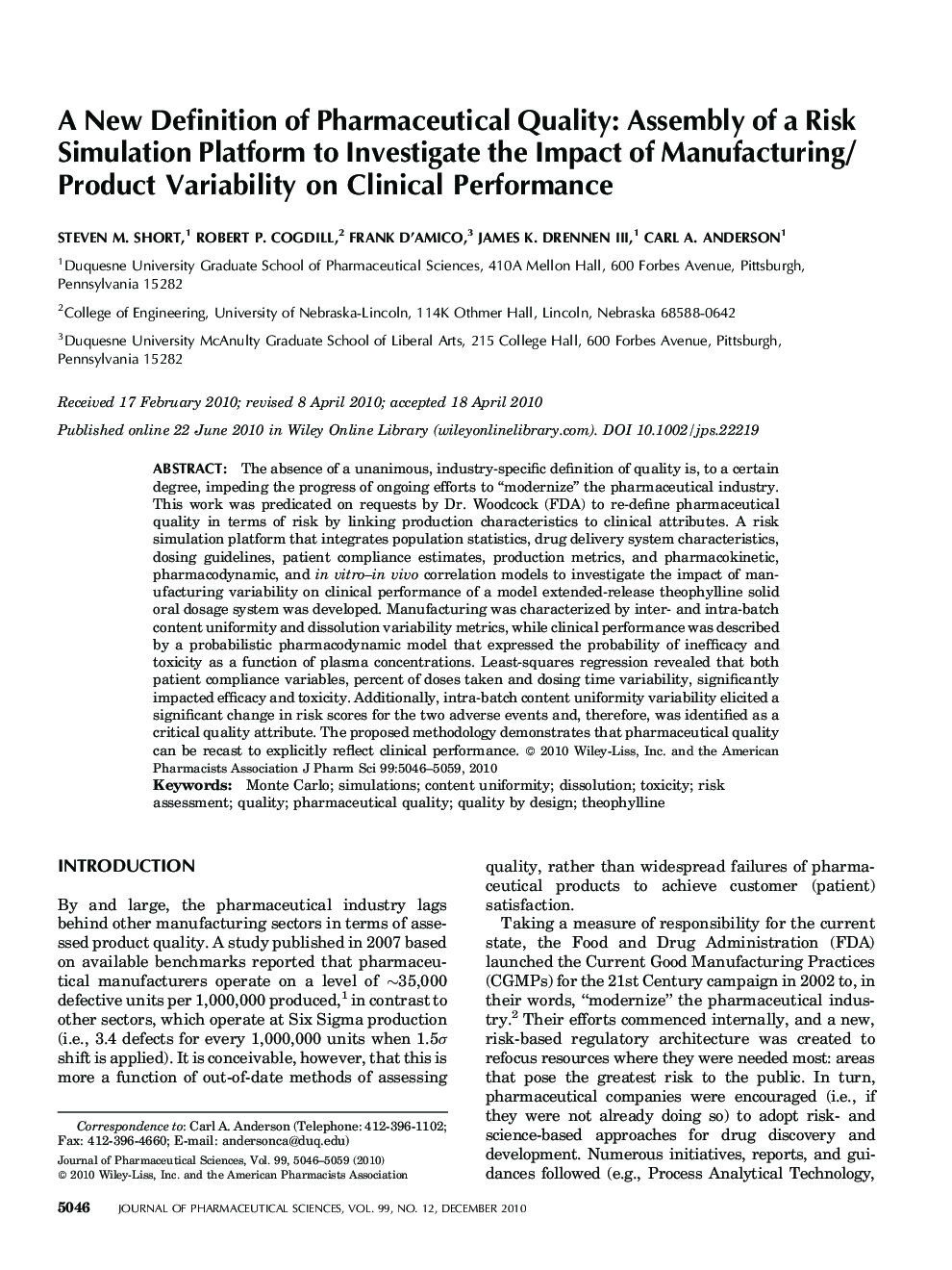| Article ID | Journal | Published Year | Pages | File Type |
|---|---|---|---|---|
| 2484935 | Journal of Pharmaceutical Sciences | 2010 | 14 Pages |
Abstract
The absence of a unanimous, industry-specific definition of quality is, to a certain degree, impeding the progress of ongoing efforts to “modernize” the pharmaceutical industry. This work was predicated on requests by Dr. Woodcock (FDA) to re-define pharmaceutical quality in terms of risk by linking production characteristics to clinical attributes. A risk simulation platform that integrates population statistics, drug delivery system characteristics, dosing guidelines, patient compliance estimates, production metrics, and pharmacokinetic, pharmacodynamic, and in vitro-in vivo correlation models to investigate the impact of manufacturing variability on clinical performance of a model extended-release theophylline solid oral dosage system was developed. Manufacturing was characterized by inter- and intra-batch content uniformity and dissolution variability metrics, while clinical performance was described by a probabilistic pharmacodynamic model that expressed the probability of inefficacy and toxicity as a function of plasma concentrations. Least-squares regression revealed that both patient compliance variables, percent of doses taken and dosing time variability, significantly impacted efficacy and toxicity. Additionally, intra-batch content uniformity variability elicited a significant change in risk scores for the two adverse events and, therefore, was identified as a critical quality attribute. The proposed methodology demonstrates that pharmaceutical quality can be recast to explicitly reflect clinical performance.
Keywords
Related Topics
Health Sciences
Pharmacology, Toxicology and Pharmaceutical Science
Drug Discovery
Authors
STEVEN M. SHORT, ROBERT P. COGDILL, FRANK D'AMICO, JAMES K. III, CARL A. ANDERSON,
